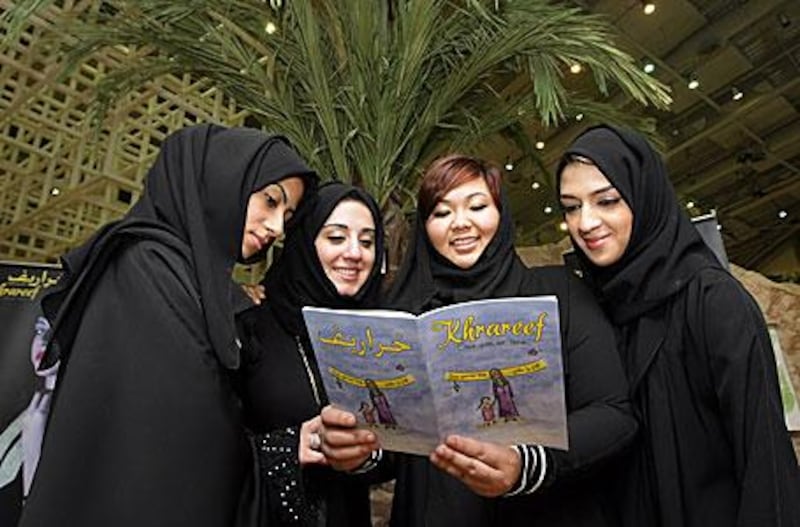DUBAI// A group of Zayed University students have produced Dubai's first book of Emirati folklore for children to ensure traditional tales such as Um al Duwais and the more obscure Khattaf Raffai do not become forgotten. As part of the group's final-year project, the communication and media sciences students are also holding a week-long series of daily readings from the book, called Khrareef, at Children's City.
"We put together what is the first book of Emirati fairy tales for children," said Atheer bin Shaker, adding that 600 copies of the hardback collection would be distributed free at Children's City to school groups. "My late grandmother used to tell me one of these stories every time I stayed at her house in Ras al Khaimah," said Ms bin Shaker, 21. "So, 11 years after she passed away, it's really amazing to be able to publish the stories my grandmother told me." Ms bin Shaker and fellow students Sarah Ahrari and Raisa al Zarouni, both 21, and Abeer al Ali, 24, decided to collect and publish the fairy tales after discovering traditional Emirati characters were unknown to their younger siblings.
Among the most popular stories in the book is a child-friendly version of Um al Duwais. Traditionally, she is portrayed as a young woman who uses her captivating beauty to mesmerise her male victims before revealing herself to be a hideous, murderous witch. In the new version, she entices two boys with sweets before making them vanish. Other legends were unfamiliar to many of the students as well as the youngsters.
"There were some characters, such as Khattaf Raffai, who we didn't know about until we spoke with a historian," Ms al Zarouni said. In that story, the mischievous spirit creates a mirage of riches to lure unwary fishermen into peril at sea. The fable is a warning to children not to be consumed by greed, Ms al Zarouni said. As part of their research, the students interviewed local elders as well as historians. They also surveyed dozens of five to nine-year-olds from different nationalities to find out what, if anything, they knew about Emirati myths.
"All of the children's favourite stories were western ones such as Cinderella, Snow White and Peter Pan," Ms bin Shaker said. She said that only one child had heard of any of the Emirati characters, in this case Um al Duwais. In the longer term, the group hopes the tales will "give a sense of belonging to the nationals and non-nationals of the UAE". The students also intend to archive the stories and make them available in public libraries, Ms bin Shaker said.
The five stories in the new book, printed in Arabic and English, are illustrated by Dina Khorchid, an artist from Saudi Arabia. The project was sponsored by Dubai Municipality, Children's City, the Government of Dubai, Golden Star Advertising and Zayed University. The final storytelling event at Children's City is tomorrow from 4pm to 6.30pm. mkwong@thenational.ae






